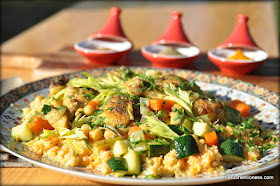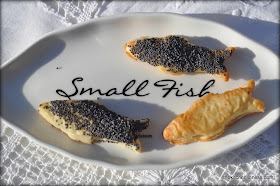February marks the tenth month of our international online cooking group, The Cottage Cooking Club. As a group, recipe by recipe, we are cooking and learning our way through a wonderful vegetable cookbook written in 2011 by Hugh Fearnley-Whittingstall, called „River Cottage Everyday Veg“.
The Cottage Cooking Club is meant to be a project aimed at incorporating more vegetable dishes in our everyday cooking, getting to know less known, forgotten or heritage vegetables, learning new ways to prepare tasty and healthy dishes, and sharing them with family and friends.
All the members of this cooking group will make an effort to use as much local, regional, organic and also seasonal produce as is resonably possible. With that goal in mind, during the month of February, I prepared a nice array of vegetable dishes from the recipe line-up.
Since I prepared eight out of ten recipes, I will write about each dish according to the order in which I prepared them.
My first recipe for this February post was the Potato Rösti (page 391) from the chapter "Side Dishes". I have made those Rösti so many times and written about them at length in this blog – so, I will keep it short. These is one of the most wonderful, economical and versatile side dishes I know. Just make sure to keep some readily boiled and unpeeled potatoes in your fridge and all you have to do is peel them, grate them and fry them at a moment´s notice. Toppings of our choice include spinach, Alpine cheese or caramelized onions. The only aspect that is different from my ususal recipe ist hat I like to use duck fat if I can get my hands on it to fry these babies – other than, predictably, we loved this recipe. Crunchy outside, not too thick and creamy insides - potato heaven.
I veered off the February line-up of recipes , just ever so slightly and prepared Oven-Baked Kale Chips for the kids (and us). Kale has such a different quality when roasted, compared to boiled. It goes crisp and crackly in some parts, and tender in others. Preheat the oven to 220 C. Rinse the kale under cold running water and dry the leaves very well, cut out the centre stalks, then cut into 5cm slices. Place on a baking sheet, drizzle over some good olive oil, and season with salt and pepper. Roast in the oven for 20 minutes, turning halfway through cooking, until crisp at the edges. Sorry, just could not resist that lovely, fresh, curly winter kale.
The second recipe was the Roasted Beetroot Soup with Horseradish Cream (page 144) from the chapter „Hefty Soups“. A perfect winter soup with earthy flavors form the roasted beetroot. We are living in a country of serious beet lovers - although, for some reason, you can mostly find them brined and in jars these days. But I came across a few at my green grocer the other day and happily took them home with me. A few were enough for this recipe. We did enjoy the contrast of flavors, the earthiness from the beets and the tang from the Horseradish Cream that was added as a topping to this thick and very hearty soup. Horeseradish is anoteh beloved item around here. Garnished with really fresh dill, this was a nice change of pace from our usual soups.
The third recipe was Roasted Squash and Shallots with Merguez Chickpeas (page 365) from the chapter „Roast, Grill & Barbecue“. This dish was the most labor intense one of the month and it required a bit of planning ahead. First step was the overnight soak of the chickpeas. Second was the cooking of the chickpeas the next day (you could use canned ones here I imagine to make things easier). The next step required the roasting of the butternut squash, shallots and garlic. Then the preparation of the chickpea „merguez dressing“ with a lot of fresh spices such as cumin, fennel, coriander, caraway and black pepper (this is where my lovely pestle and mortar from the wonderful Mr. Oliver comes in handy) – then you add some more spices such as sweet smoked paprika, cayenne pepper etc. to the dressing before you toss those cooked and still warm chickpeas in that dressing. You add the roasted squash and shallots to your plate, top with warm chickpeas, spoon over some more warm spicy oil and finish with parsley leaves.
While we loved the warm spicyness of the dish and the depth of flavor all those wonderful components brought to this dish – I will certainly make this on a weekend next time, I was a bit taken aback by how long this took me to prepare but when squash season will come around again, I will make sure to prepare this again.
The fourth recipe I made – and this one was a real breeze to prepare when compared to the previous one – was the Cheesy Peasy Puff Turnover (page 220) from the chapter „Store-Cupboard Suppers“. The kids adored this turnovers with peas and grated and melted cheese.
This is one of those recipes that surprised me the most. I loved how the flavors came together in this one. Prepared with store-bought puff pastry (who on earth has the time to make this from scratch during the week, I do not), frozen petit pois in winter time, a really good cheese and some farm fresh egg, sea salt and freshly ground black pepper, this is a recipe that I will come back to many times.
I might prepare some smaller version next time with a side salad and/or a spicy tomato soup and serve them to my kids´ friends – curious to see whether they share our enthusiasm for these. And when peas will be in season, I shall use fresh ones and see whether these turnovers are even more delicious with fresh peas. If you like the taste of peas, you have to try this recipe.
Recipe number five was the Avocado and Ruby Grapefruit with Chilli (page 122) from the chapter „Raw Assemblies“.
What a showstopper of a recipe with a genious mix of flavors and textures. Creamy, perfectly ripened avocado, tangy, citrussy grapefruit (which, to my great surprise, proved to be a bit hard to find around here and I had already lined-up blood oranges as a a back-up), spicy finely chopped chilli and some good quality extra-virgin olive oil, freshly ground black pepper and some lovely sea salt. What a delicious surprise.
Onto recipe number six and seven, the Refried Beans Foldover (page 190) with freshly cooked soft Flatbreads (page 172), both from the chapter of "Bready Things".
In the morning I started off with preparing the Magic Bread Dough with flour from my favorite artisan flour mill, Horbacher Mill, pictured above. This has become one of my favorite dough to prepare these days for pizzas, flatbreads, breadsticks etc. The recipe calls for plain white flour which is called “Type 405“ around here) and also strong white flour (called “Type 1050“) - I have taken to substitute spelt flour for both varieties of flour in this recipe.
Then I prepared the refried bean mixture ( a first to me) and I was quite taken by the end result. For the bean mixture you will need onion, garlic, chilli, dried oregano, grated tomatoes, cannellini benas, cayenne pepper or smoked paprika (I used a bit of both). I chose to serve the Refried Benas Folover with sour cream, freshly sliced avocado, red onions, grated cheese and a sprinling of mild smoked Spanish paprika as well as some fresh Italian parsley. Served all warm and fresh this is so incredibly good with the right amout of spiciness and creaminess – really comfort-style food that pleased each and every palate around the table.
The last recipe I made this month was the Baba Ganoush (page 303) from the chapter of „Mezze & Tapas“ – a classic, smoky purée of aubergine, garlic, tahini, lemon juice, sea salt and black pepper.
I went a little unconventional here and served this dip with homemade wholewheat pita crisps with cheese from my favorite local dairy farm, Bauerngut Schiefelbusch, (pictured in my very first little movie at the end of this post), some sour cream, extra chilli and sliced spring onions – why not, we loved it this way and since I have a ton of that lovely tahini left over, I will make this dip again this week and serve it with freshly baked flatbreads.
Another month full of wonderful vegetable dishes – we certainly love the recipes from this cookbook.
Please note, that for copyright reasons, we do NOT publish the recipes. If you enjoy the recipes in our series, hopefully, the wonderfully talented and enthusiastic members of the Cottage Cooking Club and their wonderful posts can convince you to get a copy of this lovely book. Better yet, do make sure to join us in this cooking adventure! There is still time, we are „only“ half-way through this amazing book!
For more information on the participation rules, please go here.
To see which wonderful dishes the other members of the Cottage Cooking Club prepared during the month of February, please go here.
















































